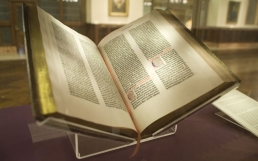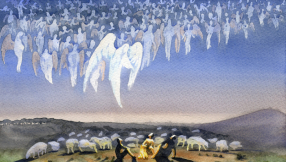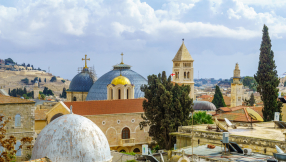
Evangelical Christians are pretty good at praying with words. A good prayer meeting is one that has one person praying aloud after another. We tend to think that silence is awkward and we aren't really sure what to do with it.
But prayer in the Bible isn't always about words at all. Sometimes prayer is silent. Sometimes – and this is very strange to us – prayer is an action, not expressed in words.
We can see this in the lives of Elijah and Elisha, two of the greatest of the non-writing prophets.
1. Elijah was told by God to announce to King Ahab that there'd be no rain in Israel until he gave the word (1 Kings 17:1). He had his great showdown with the prophets of Baal, when he challenged them to see whether Baal could light the fire of his own sacrifice; Baal couldn't, but God could. The result was the deaths of hundreds of them, but the crisis wasn't over yet: it still hadn't rained. So in 1 Kings 19:42 it says that "Elijah climbed to the top of Carmel, bent down to the ground and put his face between his knees."
It's an unusual posture for prayer, but Elijah was making the shape of a cloud. Seven times he sent his servant to look out over the sea, and on the last time he came back and said, "A cloud as small as a man's hand is rising from the sea" – a sign that his prayer had been answered.

2. Elisha was Elijah's disciple and successor. In 2 Kings 4 there's the story of the healing of the son of the Shunamite woman, who was born by God's miraculous intervention. He died suddenly and Elisha was called. Verse 34 says: "He got on to the bed and lay upon the boy, mout to mouth, eyes to eyes, hands to hands. As he stretched himself out upon him, the boy's body grew warm." Elisha got up and walked around, then repeated the process; the boy revived.
The prophet was mimicking the position of the dead boy and acting out what he wanted God to do.
3. In 2 Kings 6 there's the story of a floating axe-head. Elisha and his disciples, the "company of the prophets", decide to build somewhere to live. One of them is cutting down a tree and the head flies off his axe into the river and sinks. "Oh, my Lord," he says, "it was borrowed!"
Elisha cuts a stick, throws it into the water and the axe-head rises to the surface. Just as the stick floated, so does the iron. It might seem like a trivial thing, but an iron axe-head would have been very valuable and worth a miracle.
The point about all these miracles is that they involve the prophet identifying himself with what he wants and acting out the miracle. No words are involved, but the actions speak clearly in each case.
This is very challenging for Christians today. It's quite easy to pray using words, though we don't always do it as often as we should. But what would our discipleship look like, if we made ourselves into the shape of our prayers?
What would the effect be, if instead of just asking God to act, we transformed ourselves into the answer?
Follow @RevMarkWoods on Twitter.
















